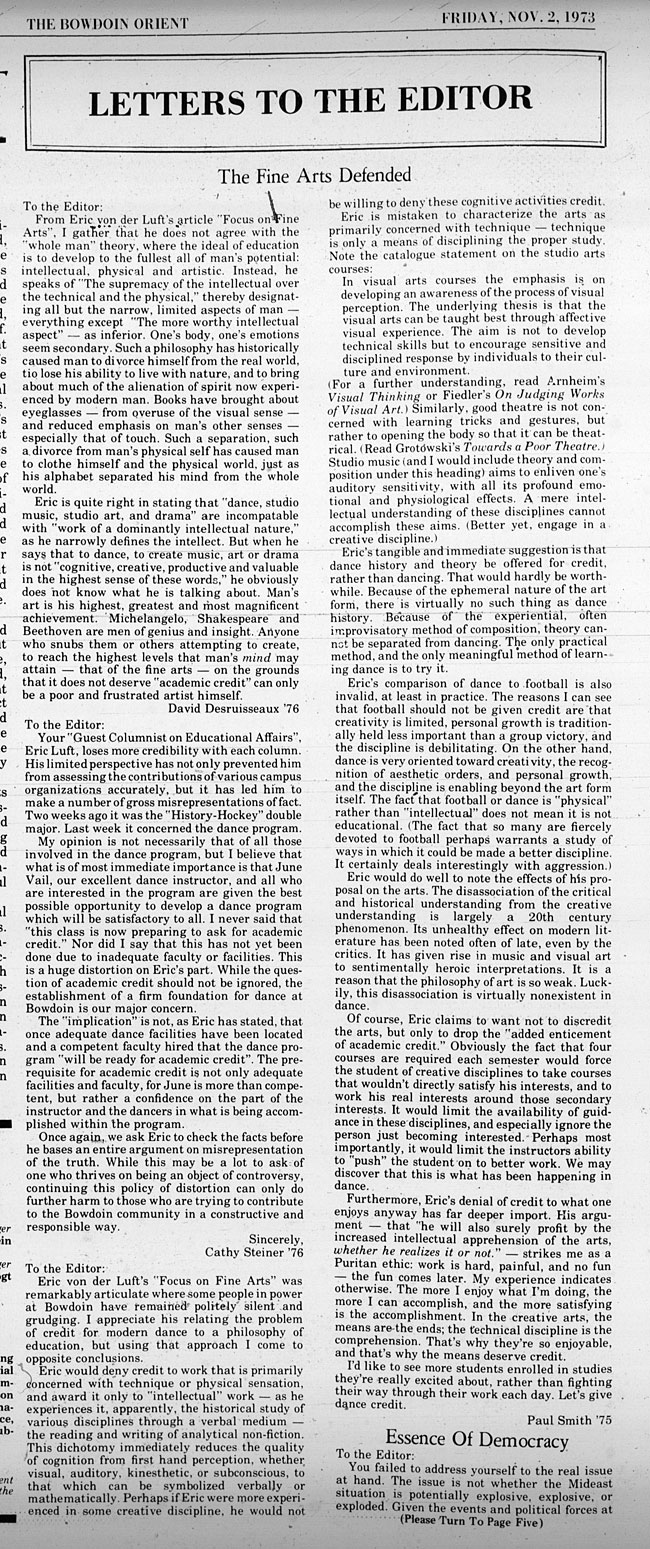After admitting its first female students in the fall of 1971, Bowdoin began to reassess the demands on departments, courses, and/or facilities that women’s presence on campus introduced. Specifically, Bowdoin sought to revamp its art facilities and to offer more arts and humanities classes. Faced with new or better course options within the realm of painting or dance, students responded in a variety of ways. The two Orient articles presented here, (Documents SW, 33.1, 33.2) illustrate how some students, e.g., Eric Von Der Luft, felt the “fine arts…are more comparable to football than to scholarly endeavor,” while others, e.g. Cathy Steiner and Paul Smith, assert that the fine arts are a crucial component to higher education, especially because they are “very oriented toward creativity, the recognition of aesthetic orders, and personal growth.”
As the opinions put forth in these Orient articles highlight, Bowdoin students, male and female alike, had much to say about the delineation of academics and academic credit, and how the College’s curriculum should meet them. With the advantage of 20-20 hindsight, we can definitively say that despite his strong and publicized opinion, Von Der Luft’s argument did not win out: starting in 1973 and continuing until the present day, fine arts courses have become an integral part of Bowdoin’s curriculum.

